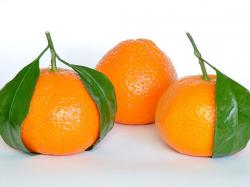Mandarin Oranges, Rising Stars Of The Fruit Bowl
February 4, 2016 | 1 min to read

BAKERSFIELD, Calif. — Along the Maricopa Highway at the southwestern end of the San Joaquin Valley, rimmed by hardscrabble hills and bobbing oil derricks, stretch miles of lush green groves bearing fluorescent mandarin oranges. Once home to cotton fields, this is now the epicenter of an epic agricultural boom that has industrialized a noble fruit and turned it into a rising star.
Since that expansion started in the late 1990s, California’s mandarin plantings have increased 10-fold, to 50,000 acres from 5,000. The state now harvests 92 percent of the nation’s mandarin crop, while Florida, troubled by citrus greening disease and obsolete varieties with seeds, has had its share drop to 8 percent, from 66 percent.
In the process, thanks to new offerings and deft marketing, mandarins — popularly known as tangerines — have become a fixture in the American fruit bowl. The country’s consumption of mandarins has doubled, to five pounds a year for every American, while orange sales have declined.
To read the rest of the story, please go to: New York Times
